Backpacking South America is one epic adventure and this route is the longest of all our travel itineraries. It includes Colombia, Ecuador, Peru, Bolivia, Chile, Argentina, Uruguay and Brazil. It may easily take up to half a year to complete and that would still be missing out large chunks of the continent! Read on and start planning what could be the trip of a lifetime with our suggested South America backpacking route.
Table of Contents
Backpacking South America – Route Info
TIME NEEDED – 5-6 MONTHS
It takes a long time to backpack South America with 6 months a decent time-frame for an extended trip across the continent. The route outlined below could be done in a bit less but there is plenty to see and you will be spending A LOT of time on buses. Unless you fancy a six hour coach journey every other day, take your time and don’t be afraid to break up your journey with a few longer stops if you find somewhere you really like.
POSSIBLE SHOESTRING BUDGET – £5000 €5800 $6000
Overall, backpacking South America is not expensive when compared to regions such as North America or Western Europe but there are some significant variations between the different countries with travel in Brazil considerably more costly than Bolivia or Peru for example.
These figures are based on spending $1000 per month on average although exchange rates are subject to change. For more detailed info see our full South America backpacking budget which features individual country budgets as well as regional ones.
However note this is only a really rough guide and your actual costs will depend on a range of factors, including your own travel habits and any future developments during these uncertain economic times.
The figures above don’t include the cost of flights to/from South America. They are based on taking buses everywhere and staying in hostel dorms or cheap private rooms where prices are comparable.
TRAVEL INSURANCE FOR BACKPACKERS IN SOUTH AMERICA
The cost of travel insurance isn’t included in the budget figures above. You can get a long stay quote in under a minute from Heymondo who offer well reviewed international travel insurance for trips of more than 3 months. Use our Heymondo discount code to get 5% off.
WORK OR VOLUNTEER WHILST TRAVELLING IN SOUTH AMERICA
One way to have a more rewarding and perhaps realer South American experience is to use Worldpackers to find a work or volunteer placement. Their website/app allows you to search for placements and exchange your skills for free accommodation and meals.
They have over 2000 work exchange options in South America at the time of writing, perfect for breaking up a long backpacking trip and saving some money. You may also be interested in our Workaway vs Worldpackers comparison if you’re serious about looking for work exchange opportunities.
Backpacking South America – A 6 Month Itinerary
Colombia
Fly into Cartagena (possibly via a connecting flight in Bogota) or if you’re coming from Central America consider your best options for crossing the Darien Gap from Panama. Many travellers opt for a combined Central and South America backpacking route. Check out our separate Central America itinerary if that appeals to you. You can easily link the end of that route with the start of this one.

Cartagena – The old part of Cartagena is a special place with horse-drawn carriages and stylish architecture while the city is on the coast so has a real Caribbean flavour. This is a natural starting place for many travellers with cheap flights to/from Miami which is connected to cities all over Europe and North America.
Parque Nacional Tayrona – Skip tacky Santa Marta and Taganga for the beautiful national park with deserted Caribbean beaches and snow-capped peaks.
Mompos – Totally unique town well off the beaten track, stuck in a time-warp with lots of old furniture and rocking chairs!
San Gil – Adrenaline junkies paradise with cheap and excellent rafting, paragliding, hydrospeeding and waterfall abseiling.
Villa de Leyva – Colonial town near the capital with a huge main plaza.
Bogota – Cool and much improved capital city with an efficient transport system, cycling Sundays, quirky districts and some of the best museums in South America including the popular Museo del Oro. Read our rundown of fun things to do in Bogota for a bit of inspiration as to how to pass your time in the Colombian capital.
Salento – Small town, lots of travellers and some stunning surrounding countryside.
Cali – Colombia’s salsa city with some wild nightlife at weekends.
Popayán – Perhaps the most attractive of Colombia’s old towns with lots of churches and pretty white buildings.
Seek local advice before heading to the Ecuadorian border, particularly at night, as this region doesn’t rank among the safest in a country that has massively improved in that regard over the past decade or so. It’s advisable to set off very early and consider stopping overnight in Pasto or Ipiales. The journey is at least 12 hours in total and this is possibly the longest day of travelling on our whole South America backpacking itinerary. The border crossing itself is fairly quick and painless at the international bridge between Ipiales (COL) and Tulcan (ECU) and there are hourly buses on to Otavalo.
Ecuador
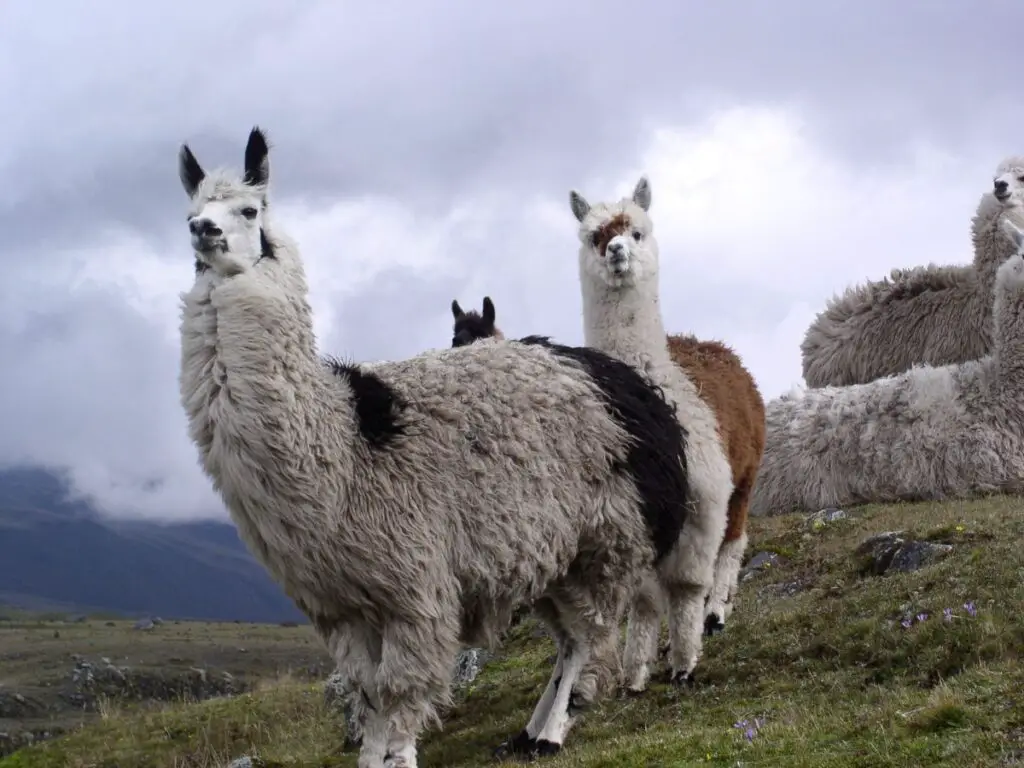
Otavalo – Famous for its Saturday market, cock-fighting ring, friendly indigenous people and lots of men sporting dresses and ponytails!
Quito – Popular if at times unsafe capital city. The old town is large and interesting but head to the Mariscal for an all action international area bursting with backpackers, loads of hostels and a more lively westernised scene than you find in many South American cities.
Cotopaxi – Stunning national park with the giant and freezing cold 5900 metre Volcan Cotopaxi at the centre of it.
Baños – Touristy town but a very pleasant, safe place with its famous baths and surrounded by green mountains. Take a trip into the Amazon which starts just a few kilometres east of the town.
Riobamba – Mountain town with some random buildings and shops. Starting point of the ridiculously steep train ride down to Sibambe.
Sibambe – End of the trainline, little to see but it’s only a short trip on to Cuenca.
Cuenca – Popular riverside city full of colonial buildings and cool cafes. One of the highlights of travel in Ecuador.
Make your way to the Huaquillas border crossing or take a direct bus to Mancora from Cuenca.
Peru
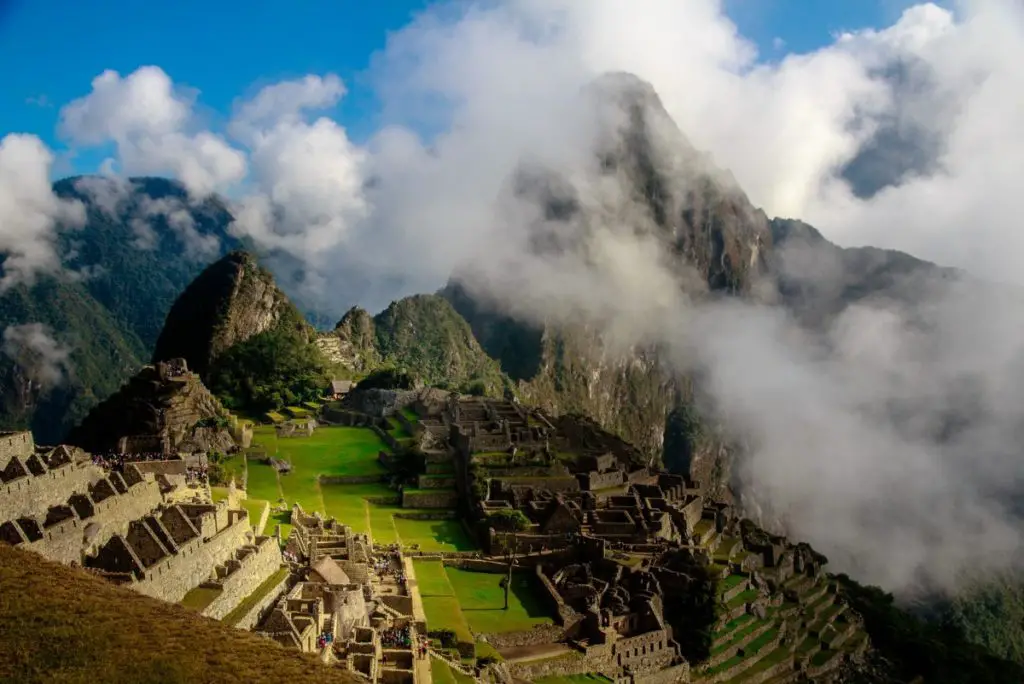
Mancora – Popular beach resort full of drunk gap year students, backpackers and surfers (or at least it was before the pandemic). Watch out for thieves on the beach!
Trujillo – Truth be told Northern Peru has little in comparison to the south but Trujillo is a decent stopover for a day or so.
Huaraz – An altitude spot of natural beauty in Peru’s Central Sierra. Surprisingly lively nightly entertainment including a decent choice of live music.
Lima – Coastal capital of Peru perched on huge cliffs above the Pacific. Enjoy some of Peruvian cuisine’s most famous dishes such as ceviche and lomo saltado.
Huacachina – Not exactly the most historic destination in Peru but much fun to be had here nonetheless in the giant sand dunes with options including sandboarding and bumpy buggy tours.
Nazca – Famous for its mysterious lines as featured in Indiana Jones. Unfortunately fly-overs are out of the budget of most South America backpackers.
Cuzco – The ancient Inca capital is still a really impressive sight and great place to hang around for a few days. It’s also the launching pad for the Inca Trail and a visit to Machu Picchu.
Machu Picchu – The most famous of all the Inca ruins, an incredible place up in the clouds of the Andes mountains. For many travellers this is the highlight of backpacking around South America but depending on when you visit, guided trips up the mountain can be very expensive and the usual cost of travel in Peru will shoot up during these days. There are a variety of options from shorter one day trips to four-day hikes taking in various ruins along the way.
Puno – Lively town on the Peruvian banks of wonderful Lake Titicaca.
There are bus companies in Puno who run services to Copacabana but check times as they are not super regular. The journey is between 2.5 and 4 hours depending on how long border formalities take. Since 2019, there are now said to be ATMs in Copacabana (there didn’t use to be) but it’s advisable to make sure you have enough cash (to at least get you through until La Paz) before crossing the border as banking facilities are notoriously unreliable in Bolivia. US dollars can be exchanged easily in both towns.
Bolivia
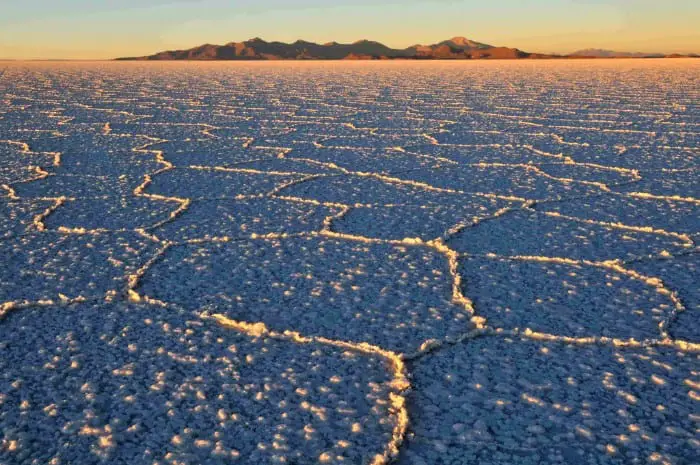
Copacabana – The first town in Bolivia – enjoy the cheapness of the place and hop on a boat to the magical Isla del Sol.
Isla del Sol – This is the Inca birthplace, a beautiful island in the middle of Lake Titicaca, the world’s highest freshwater lake.
La Paz – One of the smallest and safest capitals on the continent. Street markets, the Coca Museum and the infamous San Pedro prison are among popular visits with backpackers here, although the latter is harder to access than it used to be.
Sucre – Relaxed town known as ‘la ciudad blanca’ (White City). It is probably the most attractive city in the country.
Potosi – Take a trip down the shockingly dangerous working mines in what is the highest city in the world. A sadly depressing but unforgettable place.
Salar de Uyuni – The world’s largest salt flat is a weirdly charming destination and an increasingly popular stop on the South America backpacker trail. You will probably need to do an organised tour here, which can last several days. In Bolivia, you can even stay in a hotel made entirely out of salt, which makes our countdown of weird places to stay around the world.
Some travellers do 3 day tours of the salt flats and you may find companies offering this as part of a trip between Uyuni, a functional town in Bolivia and San Pedro in Chile. Other options include diving into Northern Argentina via the Villazon border crossing and possibly heading to the attractive city of Salta and then crossing the Argentina-Chile border to reach San Pedro.
Chile
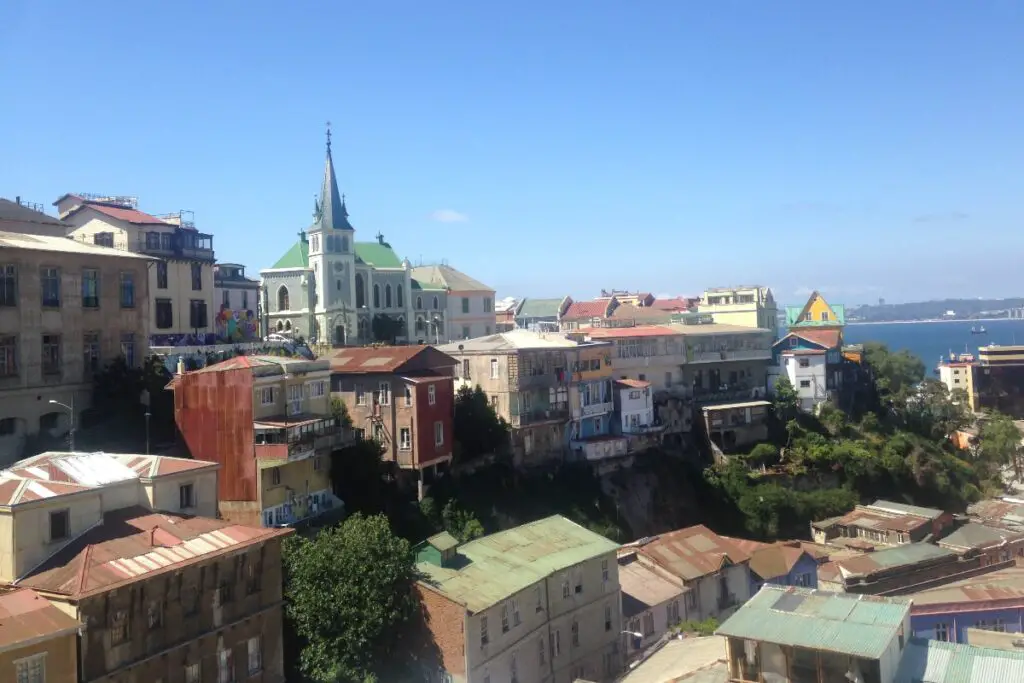
San Pedro de Atacama – Stunning desert landscape, which feels other-worldly, set around the laid back but somewhat pricey (by regional standards) town. One of the best places in the world for stargazing.
Antofagasta – Unremarkable port offers an insight into life in a non-touristy Chilean city and has good transport links going south.
Copiapo – Sleepy town which burst into the global spotlight in 2010 with the dramatic and very moving rescue of 33 trapped miners. Not much to see and some travellers opt to skip this area altogether by taking a flight south from Calama or Antofagasta to Santiago and then venturing onto Viña del Mar and Valparaiso.
Viña del Mar – Some of the best beaches in the country with one of South America’s most famous music festivals every February.
Valparaiso – Colourful town with a vibrant bohemian culture. A real, unexpected gem with some interesting museums and things to see including the former house of Chilean poet Pablo Neruda. It is immediately adjacent to Viña del Mar and the two can easily be combined into one visit. Read these 10 Questions answered on travelling to Valparaiso & Viña del Mar to find out more!
Santiago – Capital city with much to do in and around it. During the winter, there are even opportunities to go skiing in the surrounding Andes.
You can easily extend your time in Chile by following our backpacking route in Patagonia. To continue with this South America itinerary, there are buses from Santiago to Mendoza that take around 8 hours. The route is a spectacular crossing of the Andes and obviously you will see more if you opt for a day bus although night ones do run. You may want to stop off in a village in the mountains to break up the journey and enjoy the incredible scenery but be wary of altitude sickness! Check out BusBud for the latest schedules.
Argentina

Mendoza – Excellent wine produced here and it’s also not far from Mount Aconcagua, the tallest on the continent.
Cordoba – Argentina’s second city is full of students and offers something of a Mediterranean feel. It’s a big city but much more chilled out than Buenos Aires.
Alta Gracia – Small country town outside of Cordoba. The main attraction in Alta Gracia is Che Guevara’s childhood home, which is now an excellent museum.
Rosario – Big city with riverside beaches and a slightly alternative vibe.
Buenos Aires – One of the world’s largest cities and a hugely popular destination on any South America backpacking route. Take in a football match to experience the national obsession, soak up the vibrant streetlife, and party in lively bars and clubs that stay open all night. Buenos Aires has perhaps the widest selection of things to see and do of anywhere on this itinerary so plan to spend a bit longer than usual here.
Colonia is actually a popular day-trip from Buenos Aires so it is very easy to get from Argentina to Uruguay. Buquebus is a company that offers fast boats taking just one hour or cheaper slow boats that do the journey from BA to Colonia in just under three hours. They also have boats direct to Montevideo and Punta del Este from the docks in Buenos Aires.
Uruguay

Colonia – A short hop across Rio de la Plata from BA, this cobblestone town with lively bars is a great if a little touristy introduction to Uruguay.
Montevideo – Small and very pleasant by the standards of capitals in Latin America. Popular with artists and architecture lovers.
Piriapolis – Fun, budget beach resort with jet skiing, windsurfing and banana boating.
Punta Del Este – Most popular beaches in the region and a big nightlife scene during the summer months or at holiday times!
Cabo Polonio – A tiny coastal village with sea lions, penguins, whales, rustic hostels and lots of hippies.
It’s a long trip north from Uruguay to Porto Alegre. One option is to cross the border on foot at the nearby town of Chuy. The main street is called Avenue Brasil/Uruguay and is where you will find the immigration controls. There is accommodation in the town if you don’t want to head straight to Porto Alegre which is around 7.5 hours away by day or night bus from Chui Bus Station on the Brazilian side of the border. This is where backpacking through South America suddenly seems to get a bit more expensive. Read more on the cost of travel in Brazil.
Brazil
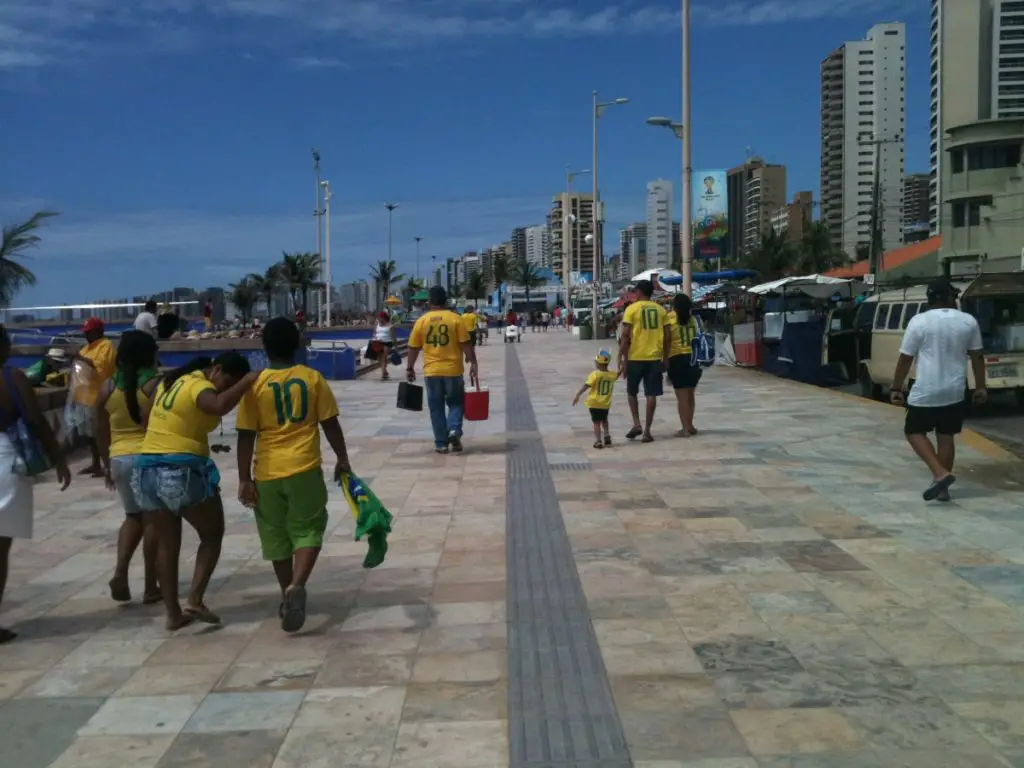
Porto Alegre – Relatively large city with a modern feel, a number of interesting museums and lively arts and music scenes.
Iguacu Falls – Spectacular waterfalls where three countries meet. Pop over into Paraguay if you’re looking to tick another country off your list. Iguacu Falls is one of our top 10 Latin America travel experiences!
Curitiba – Historic buildings, arty vibes and a European influence give Curitiba a different feel to other cities in Brazil.
Ilha do Mel – Enchanting island with top notch beaches, surfing and lively parties in the peak season. Cars are banned!
São Paulo – The biggest city in the southern hemisphere is chaotic but worth a visit just to get a feel for one of the world’s megacities. More on the monster that is São Paulo here!
Paraty – Stunningly preserved 18th century colonial town with so many beaches and islands nearby you are literally spoilt for choice.
Ihla Grande – More amazing Brazilian beaches, lush forests and island parties.
Petropolis – Easy day trip from the heat of Rio but it’s worth crashing in this historic mountain town for a night.
Rio de Janeiro – Rio would make a spectacular ending to your time travelling in South America. Time it to get here in March for the Rio Carnival if you can but remember to book accommodation in advance. The city of sun, sea and sin is so much fun!
Check out our specific Brazil travel itinerary if you want to keep going and explore more of the country. Otherwise Rio is a pretty good destination for flights home with one of the busiest South American airports. There are often more options from São Paulo though.
South America Map & Itinerary Overview

Our South America backpacking route starts in Colombia which has been experiencing something of a travel boom over the past few years and rightly so. It has evolved into a mostly safe, friendly and exciting place to visit with a fabulous mix of big cities, stunning countryside, Caribbean coastlines and Latin passion.
It then follows the Andes down through Ecuador taking in historic Quito and a jaw-dropping train ride. Peru is next and for many the highlight of travel in the region: the Inca Trail and a trip to Machu Picchu. Head east into Bolivia and be shocked and inspired in equal measure by the continent’s poorest country before diving into Chile for more spectacular Andean journeys.
Some vibrant big cities await as you head from the Chilean capital of Santiago on the Pacific Coast to buzzing Buenos Aires on the Atlantic Coast taking in the heart of Argentina as you go. After months on the road, it’s now very much relaxation time as the beautiful beaches of Uruguay and Southern Brazil await before going out with a bang in the ultimate party city of Rio de Janeiro.
South America Backpacking Route – How long to spend in each place?
| Country | Destination | Suggested Time |
| Colombia | Cartagena | 2-3 Days |
| Colombia | Parque Nacional Tayrona | 2-4 Days |
| Colombia | Mompos | 1-2 Days |
| Colombia | San Gil | 2-3 Days |
| Colombia | Villa de Leyva | 1 Day |
| Colombia | Bogota | 2-3 Days |
| Colombia | Salento | 2 Days |
| Colombia | Cali | 2 Days |
| Colombia | Popayán | 2 Days |
| Ecuador | Otavalo | 2-3 Days |
| Ecuador | Quito | 2-4 Days |
| Ecuador | Cotopaxi | 2-4 Days |
| Ecuador | Baños | 2 Days |
| Ecuador | Riobamba | 1-2 Days |
| Ecuador | Sibambe | 0-1 Day |
| Ecuador | Cuenca | 2-3 Days |
| Peru | Mancora | 2-4 Days |
| Peru | Trujillo | 1-2 Days |
| Peru | Huaraz | 2-3 Days |
| Peru | Lima | 2-3 Days |
| Peru | Huacachina | 2 Days |
| Peru | Nazca | 1-2 Days |
| Peru | Cuzco | 3-4 Days |
| Peru | Inca Trail & Machu Picchu | 1-4 Days |
| Peru | Puno | 1-2 Days |
| Bolivia | Copacabana | 2 Days |
| Bolivia | Isla del Sol | 2 Days |
| Bolivia | La Paz | 2-4 Days |
| Bolivia | Sucre | 1-2 Days |
| Bolivia | Potosi | 2 Days |
| Bolivia | Salar de Uyuni | 2-4 Days |
| Chile | San Pedro de Atacama | 2-4 Days |
| Chile | Antofagasta | 1-2 Days |
| Chile | Copiapo | 1 Day |
| Chile | Viña del Mar | 1-4 Days |
| Chile | Valparaiso | 2 Days |
| Chile | Santiago | 2-4 Days |
| Argentina | Mendoza | 2-3 Days |
| Argentina | Cordoba | 2-3 Days |
| Argentina | Alta Gracia | 1 Day |
| Argentina | Rosario | 2-3 Days |
| Argentina | Buenos Aires | 3-5 Days |
| Uruguay | Colonia | 2 Days |
| Uruguay | Montevideo | 2-4 Days |
| Uruguay | Piriapolis | 1-3 Days |
| Uruguay | Punta Del Este | 1-4 Days |
| Uruguay | Cabo Polonio | 2 Days |
| Brazil | Porto Alegre | 2 Days |
| Brazil | Iguacu Falls | 1-2 Days |
| Brazil | Curitiba | 2 Days |
| Brazil | Ilha do Mel | 1-3 Days |
| Brazil | São Paulo | 2-3 Days |
| Brazil | Paraty | 2-3 Days |
| Brazil | Ihla Grande | 2-3 Days |
| Brazil | Petropolis | 1-2 Days |
| Brazil | Rio de Janeiro | 3-6 Days |
This South America backpacking route is designed for 6 months if you take it at a leisurely place and usually opt for the higher end of the suggested time-frames.
Remember when planning your trip, that you will lose a lot of hours to bus travel which will add up to many days over the entire course of your South American adventure. There will be days when you are worn out from long journeys and don’t feel like doing much when you arrive at your new destination.
The above is only designed to be a guide and you can easily tailor your route to your own preferences. It’s also worth noting that there are a few seasonal destinations, for example Viña del Mar and Punta del Este, which don’t have much going on during the winter months and could potentially be skipped.
There are 56 different destinations in total which means on average you want to be spending about 3 nights in each place for the entire trip to take 5-6 months. There will be several opportunities to do night buses though. Travelling at night is one of the best tips for backpacking South America on a budget, as you can regularly find yourself saving the cost of a night’s accommodation.
Other South America Backpacking Routes
There are loads of options for lengthening or shortening this itinerary or just doing almost entirely your own thing. Extensions may include spending time in the Amazon by delving deeper into Brazil or heading to Iquitos in Peru. Nature lovers would also be foolish not to make the long trip down to the chilly, southern tip of the continent in Patagonia.
If you’re pushed for time though, one option is to take a few flights along the way to save yourself many lonely hours on buses and skip some of the less interesting bits. One possibility would be flying from Quito to Cuzco and then heading on the Inca trail. Peru is a very large country with some dodgy roads and the ascent up to Cuzco by land is both challenging and time consuming.
If money is more your restraint and you only have three months for backpacking South America for example, consider focusing on the cheaper Andean region, particularly Ecuador, Peru and Bolivia.
This South America route was last updated in July 2022.

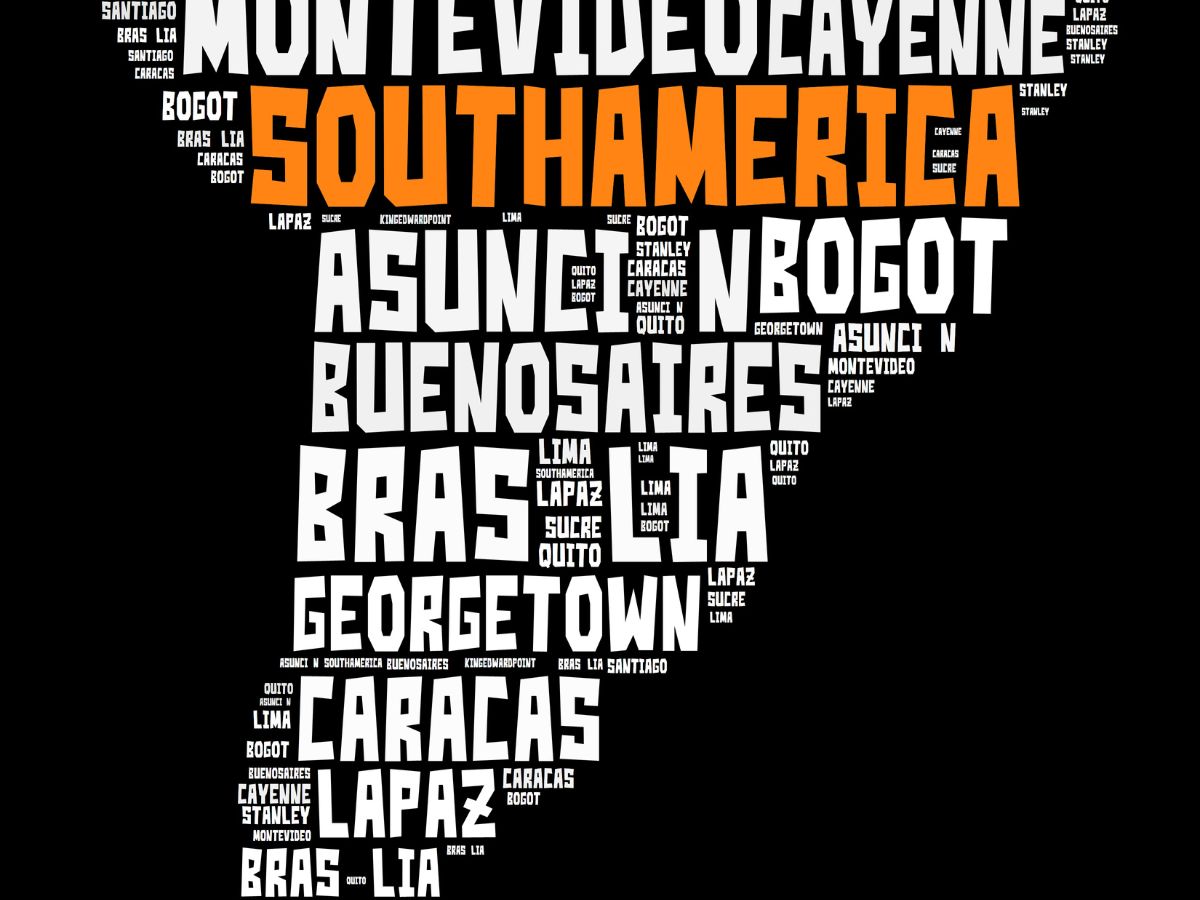
Hello!! I am in the middle of finalising my plans for South America, due to be leaving in a few months and found this super useful in helping me plan thank you so much! I have 13 weeks and my original plan was to start in Cartagena, Colombia (my flight out isn’t booked yet so start destination can change) and follow a similar route to whats been posted here making my way down to Santiago, Chile where my flight home is booked from. However, with whats been happening in Peru recently a lot of people are recommending to avoid planning to travel through. I have looked at flights from Ecuador to Bolivia but currently they all require a stop in Bogota and I am trying not to go back on myself so am considering possibly missing out Ecuador. I was just wondering if you had any possible recommendations for how best to get from Ecuador to Bolivia if I were to avoid Peru and if Ecuador is a MUST go place or I would be ok missing it out.
Did you find you had a lot of internal flights? I was hoping to avoid too many and am more than happy sitting on a bus.
Hi Mimi, glad you found it helpful. There were no major issues when I went (a few years ago), so it was possible to travel overland everywhere, although you do start to get sick of the buses after a while! I believe you can find much better prices on domestic flights in South America now so you might want to consider doing one in a larger country like Chile to save a bit of time but it’s possible to get everywhere by bus.
I think if you only have around 3 months to travel in South America and don’t want to backtrack then I wouldn’t say you absolutely have to go to Ecuador. Like you said, I can’t see any particularly good options for getting from Ecuador to Bolivia whilst avoiding Peru.
If you decide against Peru & Ecuador, you could instead maybe look at doing 3-4 weeks in Colombia, then flying to Bolivia and spending the rest of your time in Bolivia, Argentina & Chile, travelling overland. If so, I’d maybe look at doing Bolivia similarly to the route above and continuing on to San Pedro de Atacama. You could perhaps cut back through Argentina from there though in the direction of Buenos Aires before working back towards Santiago (via Rosario, Cordoba, Mendoza etc). You’d probably have time to do a week or two in Uruguay which is very easy to get to from Buenos Aires and small enough that cutting back wouldn’t be a huge pain.
Hope this helps, feel free to ask any other questions!
Hi! I´m planning to do this trip in my gap year. Do you think this trip is save for a woman traveling alone? And what time of year do you suggest starting this trip? Taking in account the best weather of all countries.
Hi Femke, We have a separate article on the best time to travel around South America which looks at your question in more depth. For this kind of 6 month route, I think starting out maybe around August time would be a nice idea and that will enable you to enjoy the summer in the south of the continent. Much will depend on what your priorities are though and there’s not really an absolute optimum time to do this route that will guarantee good weather everywhere.
Regarding safety, all I can say is that lots of solo female travellers do backpack around South America. It’d perhaps be a slightly daunting place to start out if you’ve not done any solo travelling before, but you should meet plenty of women travelling alone in a similar manner to you if you stay in hostels, particularly those with female only dorms. Personally (travelling alone as a man), I found some of the big cities (Quito, Lima etc) felt a little bit unsafe but overall I wouldn’t say I found travelling in South America noticeably more dangerous than in other parts of the world aside from that.
Hello! I can’t tell you how helpful this website has been in preparing for my trip to South America next month. I’m still feeling very unprepared to be honest, trying to decide which route and what to pack etc, but I’m just trying not to overthink it haha!
So I’m doing this trip backwards, starting in Rio… but I’m considering adding in Patagonia and Ushuaia. I noticed in one of the other comments you mentioned a book? One that includes this route? Could you tell me what it is called please and where I might order it, that might be handy to take with me! Thanks so much again for all the info in this page, such a great help!
Hi Gary, glad the website has been helpful! There used to be a book but we are not doing any new copies so you can only buy second hand from people who bought it originally. Here’s the link to it but to be honest I wouldn’t recommend buying at the prices currently listed as it’s quite a short book and much of the info will be out of date now. There may be better options from Lonely Planet or someone but the problem is so much will have changed since covid in terms of prices and information about where to stay with hostels closing down and suchlike, that I’m not sure there will be any guidebook that is very accurate right now.
We also have a Patagonia route on the site which you may have seen. You could maybe do Rio to Buenos Aires then take a flight to Ushuaia before following the Patagonia itinerary all the way up to Santiago where you could rejoin this route. I think that might be your best option, at least as a rough plan to have in mind but obviously things can change once you start travelling so like you said probably best not to overthink it too much!
Have been reminiscing on travelling recently, and I have remembered this page which I pretty much used entirely to work out a backpacking route and costings etc – it was SO useful and big shout out to the author here for a class job. For context I did the Brazil part mentioned and then Bolivia/Peru sections, linked together by crossing the land border between Brazil and Bolivia which is in my opinion a seriously underrated place with lots of cool stuff to see and hardly any backpackers there as most bypass it to go to Argentina/Uruguay etc. I did it as a 19 year old lad by himself straight out of school on little money (Probably about £5500 all inc. the v. expensive transatlantic flights etc) and without speaking a word of Spanish or Portuguese til I arrived, so if I could do it then any of you could do the same – just saying!
Hi Luke, thanks a lot for your comment – it’s always nice to read something like this!
Glad you found the post useful in planning your trip and hope your positive experience at such a young age will help convince somebody else reading this to take the plunge and travel to South America 🙂
For Peru, Huaraz is unbelievable. They have so many mountains over 18k feet/6k meters. I agree with the article about Lima. I would only go to Lima to have the best ceviche. Seriously, nothing compares to Lima’s ceviche. I spent a lot of time in the northern regions of San Martin. Decent jungle to explore up there and great food as well.
This route looks very similar to the one which I’m planning on taking. Is there any way I could find out how long you spent in each place? Does the book go into detail on the route which you took here, or is it more of a general guide to South America?
Hi Henry,
The route in the book is similar to this one with a few changes, the biggest one being that it goes South from Santiago down to Patagonia ending in Ushuaia before moving onto Buenos Aires, Uruguay and Brazil. It basically combines/picks the best from this route and the ones for Patagonia and Brazil that are also on the site.
There are suggested number of days to stay in each destination in the book although it really depends on what interests you. Also the whole getting from A to B can become tiresome after a while as there’s just so many long bus journeys so I wouldn’t plan that out too much in advance. If you find somewhere you like and you want a break from travelling, you can always stay a fair bit longer.
In general the route in the book is slightly more detailed than this but is still more designed as a general guide/overview to backpacking in South America rather than in-depth info on each destination.
Of the 6 months recommended for this route, how long do you reckon would be spent in Brazil and Argentina?
Hi Harry,
2 weeks should be enough for the Argentina bit, maybe even less if you’re not a big fan of cities. Alta Gracia can be easily done as a day-trip from Cordoba so it’s only really 4 destinations.
As for Brazil, perhaps 3-4 weeks would be about right.
It depends a bit on your budget though as Argentina and Brazil are two of the most expensive countries in South America. You could easily spend far longer in both countries and visit more places than listed here.
Hey Kate, I’m planning to travel exactly the same route as described above and also in reverse. But I think I’ll start my journey in at another time of year. I would like to exchange some information about our trips, is this possible for you? Can I find you on facebook or on an certain email account? Greeting Tijmen
Thanks for all the info!! This is the exact trip I’m starting next year but in reverse from Rio up to Colombia then head over the Darien Gap to Panama and up through to Mexico. So it’s great to have it all written here so clearly.
What time of year do you suggest starting this trip? Taking in account the best weather of all countries (or try to!) I’m planning to start beginning of August which means I get to Peru for the Inca trail end Oct (just before raining season) also making it to the Darien Gap before Jan (heard it’s a rough crossing then?) Thanks for the help!